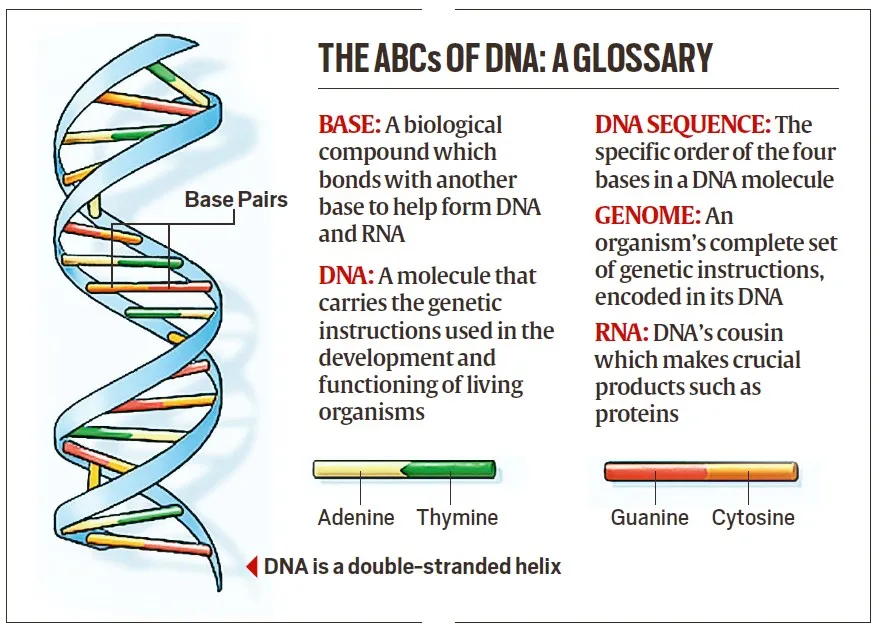Important Facts For Prelims
First Successful Use of Customised Base Editing
- 28 May 2025
- 4 min read
Why in News?
Scientists in the US have, for the first time, successfully employed a successful CRISPR-based gene-editing therapy to treat a baby diagnosed with a rare genetic disorder known as CPS1 deficiency.
- CPS1 deficiency is a rare metabolic disorder in which the liver is unable to effectively process byproducts of protein metabolism, resulting in the accumulation of toxic levels of ammonia in the body.
What is Gene Editing Therapy?
- About: Gene Editing Therapy is a medical approach that involves precisely modifying DNA to correct genetic defects, treat diseases, or enhance biological functions.
- The most widely used tool is CRISPR-Cas9, which acts like molecular scissors to cut and edit specific genes.
- Applications: Treating Genetic Disorders e.g., Sickle Cell Anemia, Cancer Immunotherapy e.g., CAR-T Cell Therapy and Agricultural Uses e.g., Drought-resistant crops.
- Tools Used for Gene Editing: CRISPR-Cas9 technology is a powerful and precise tool for editing genes that allows scientists to cut and modify DNA at specific locations inside living organisms.
- It uses guide RNA to locate and cut faulty DNA, enabling scientists to replace it with the correct sequence for cellular repair.
- TALENs and ZFNs: Transcription Activator-Like Effector Nucleases (TALENs) and Zinc Finger Nucleases (ZFNs) are older technologies that also allow targeted DNA modifications.
- It uses guide RNA to locate and cut faulty DNA, enabling scientists to replace it with the correct sequence for cellular repair.
How does Base Editing Differ from Traditional Gene Editing?
- Base Editing: Unlike CRISPR-Cas9, which creates double-strand breaks in DNA, Base editing allows direct, precise conversion of one DNA base into another without cutting both DNA strands.
- This reduces risks of unintended mutations and improves accuracy.
- Mechanism: The base editing tool uses a fusion of Cas9 with a base-modifying enzyme to convert specific bases (for example, changing a faulty cytosine to thymine) that cause genetic diseases.
- Precision: Base editing can be likened to using a pencil eraser to fix a typo instead of scissors and glue, allowing safer and more targeted genetic correction.
- Scientists identified the exact mispaired base causing CPS1 deficiency and used a base editor to precisely locate and correct it in his DNA.
- This personalized treatment eliminated toxic ammonia buildup, marking the first known successful human case of base editing.
- Scientists identified the exact mispaired base causing CPS1 deficiency and used a base editor to precisely locate and correct it in his DNA.
UPSC Civil Services Examination, Previous Year Question (PYQ)
Prelims
Q. What is the Cas9 protein that is often mentioned in the news? (2019)
(a) A molecular scissors used in targeted gene editing
(b) A biosensor used in the accurate detection of pathogens in patients
(c) A gene that makes plants pest-resistant
(d) A herbicidal substance synthesized in genetically modified crops
Ans: (a)








